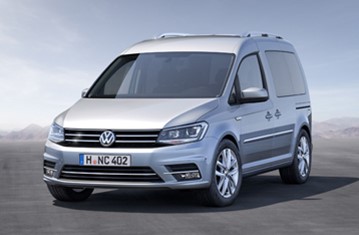Find more information in the General Comments section of the assessment
Find more information in the Rating Validity tab of the assessment
- See More
- See More
- See More
- See More
- Good
- Adequate
- Marginal
- Weak
- Poor
 Passenger
Passenger
 Driver
Driver
 Rear Passenger
Rear Passenger
 Driver
Driver
 Car
Car
 Pole
Pole
 Rear Seat
Rear Seat
 Front Seat
Front Seat
- Good
- Adequate
- Marginal
- Weak
- Poor


Passenger
outboard
center
outboard
Fitted to the vehicle as standard
Not fitted to the test vehicle but available as option
Not Available
-
Infants up to 13 kg
-
Infants and toddlers up to 18 kg
-
Toddlers from 9 to 18 kg
-
Toddlers over 18 kg
Easy
Difficult
Safety critical
Not allowed
| Seat Position | ||||||
|---|---|---|---|---|---|---|
| Front | 2nd row | 3rd row | ||||
| Passenger | Left | center | Right | Left | Right | |
| Maxi Cosi Cabriofix (Belt) | ||||||
| Britax Römer King Plus (Belt) | ||||||
| Britax Römer Duo Plus (ISOFIX) | ||||||
| Britax Römer KidFix (Belt) | ||||||
| Maxi Cosi Cabriofix & EasyFix (Belt) | ||||||
| Maxi Cosi Cabriofix & EasyFix (ISOFIX) | ||||||
| BeSafe iZi Kid X3 ISOfix (ISOFIX) | ||||||
| Maxi Cosi Pearl & Familyfix (ISOFIX) | ||||||
| Britax Römer KidFix (ISOFIX) | ||||||
Easy
Difficult
Safety critical
Not allowed
The Caddy scored maximum points for its protection of the 1½ year dummy in the dynamic impact tests. That dummy was sat in a rearward facing restraint mounted using the iSize anchorages and a support leg to prop the restraint against the floor. Where the support leg rests on a stowage space in the floor, as in the Caddy, VW recommend the use of an insert to fill the space and ensure a sufficiently strong support for the restraint. The insert was used in Euro NCAP's tests. In the frontal offset test, forward movement of the 3 year dummy was not excessive and, apart from marginally elevated neck tension, forces on the dummy were well controlled. The front passenger airbag can be disabled to allow a rearward-facing restraint to be used in that seating position. Clear information is provided to the driver regarding the status of the airbag and the system was rewarded. All of the restraint types for which the Caddy is designed could be properly installed in the car.
- Good
- Adequate
- Marginal
- Weak
- Poor

Head Impact 14.1 Pts
Pelvis Impact 0.9 Pts
Leg Impact 6.0 Pts
The bumper provided good protection to pedestrians' legs and scored maximum points. However, protection of the pelvis region was almost completely poor. The bonnet and windscreen showed predominantly adequate or marginal protection in Euro NCAP's tests.
- Good
- Adequate
- Marginal
- Weak
- Poor
| Speed Limit Information Function | N/A |
| Warning Function | Manually set |
| Speed Limitation Function | Manually set |
| Applies To | Front seats | ||
| Warning | Driver Seat | Front Passenger(s) | Rear Passenger(s) |
| Visual | |||
| Audible | |||
|
|||
| Type | Forward Collision Warning with Auto-Brake | |||
| Operational From | 30 km/h | |||
| Additional Information | Default On; Supplementary Warning | |||
| Performance | | ||||
| Autobrake Function Only | Driver reacts to warning | |||
| Operational Speed | 30-80 km/h | 30-80 km/h | ||
| Approaching a stationary car | See AEB City | Crash avoided up to 70km/h.Crash speed reduced up to 80km/h. | ||
| Approaching a slower moving car | Crash avoided up to 65km/h.Crash speed reduced up to 70km/h. | Crash avoided up to 80km/h.Crash speed reduced up to 80km/h. | ||
| Following a car at short distance | ||||
| Car in front brakes gently | Avoidance | Avoidance | ||
| Car in front brakes harshly | Mitigation | Mitigation | ||
| Following a car at long distance | ||||
| Car in front brakes gently | Mitigation | Avoidance | ||
| Car in front brakes harshly | Mitigation | Avoidance | ||
Electronic stability control is standard equipment, together with a seatbelt reminder for the front row seats. The second and optional third row seats are not protected by a seatbelt reminder. VW expect most cars to be equipped with the autonomous emergency braking system so it was included in the assessment. In Euro NCAP's tests the system performed well. A driver-set speed limiter is an option but is expected to be widely fitted so was included in the assessment. A lane assistance system is not available on the Caddy.
- Specifications
- Safety Equipment
- Videos
- Rating Validity
Specifications
Tested Model VW Caddy 2.0 TDI 'Trendline', LHD
Body Type - 5 door hatchback
Year Of Publication 2015
Kerb Weight 1546kg
VIN From Which Rating Applies - all Caddys of the specification tested
Class Small MPV
Safety Equipment
Note: Other equipment may be available on the vehicle but was not considered in the test year.
Fitted to the vehicle as standard
Fitted to the vehicle as option
Not fitted to the test vehicle but available as option
Not Available
Not Applicable
Videos
Rating Validity



Find more information in the General Comments section of the assessment
 Share
Share













The passenger compartment remained stable in the fronal offset test. Dummy readings indicated good protection of the knees and femurs of the driver and passenger. VW demonstrated that a similar level of protection would be provided to occupants of different sizes and to those sat in different positions. In the full width rigid barrier test, protection of the driver was good, apart from the chest, protection of which was adequate. Adequate protection was provided to the neck and chest of the rear passenger dummy, and good protection to the head and femurs/pelvis. The Caddy scored maximum points in the side barrier test, with good protection of all body regions. In the more severe side pole impact, protection was good or adequate but, as there was a gap between the sliding door and the B pillar after the test, the car was penalised. The front seats and head restraints demonstrated good protection against whiplash injury in the event of a rear end collision. A geometric assessment of the rear seats showed that occupants would also be well protected there. Autonomous emergency braking is available as an option on the Caddy. As it is not standard, its functionality at the low, city speeds at which many whiplash injuries occur was not assessed.